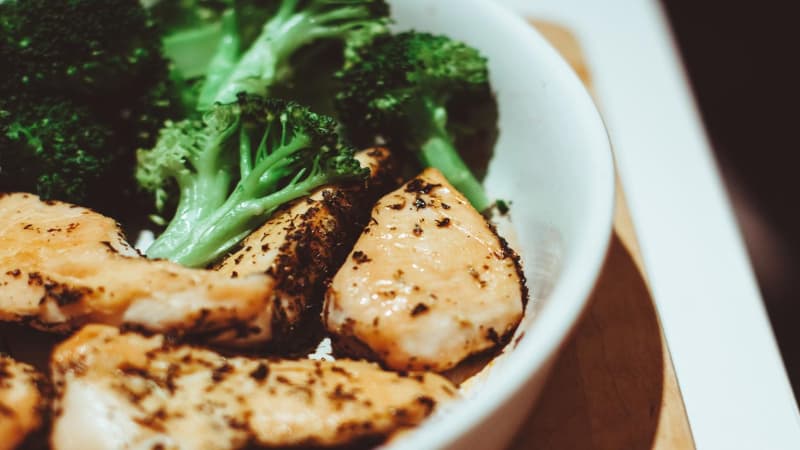When it comes to snacking, we often think we’re making healthy choices, but are we really? I’ve found that many so-called “healthy” snacks are shrouded in myths that can lead us astray. From granola bars to veggie chips, it’s easy to be misled by clever marketing and misleading labels.
Understanding Snack Myths
Snack myths often confuse consumers. It’s essential to unpack these myths to make informed choices when selecting snacks.
Common Misconceptions
Many people believe that certain snacks labeled “healthy” are automatically nutritious. Granola bars, for example, might seem like a great choice, but they often contain added sugars and unhealthy fats. Veggie chips give the impression of being wholesome, yet they can be high in calories and sodium, masking their processed nature. Low-fat snacks frequently substitute fat with sugar, leading to unhealthy calorie intake. I discover that understanding ingredient labels can shed light on what truly constitutes a healthy snack.
Origin of Snack Myths
Snack myths often originate from aggressive marketing strategies and misleading packaging. Companies highlight buzzwords like “natural,” “organic,” or “fortified” to create a sense of healthfulness. These terms can mislead consumers into believing that these products are better choices than they are. I encourage everyone to dive deeper into the ingredients rather than solely relying on marketing claims. Researching nutritional information helps separate fact from fiction in the realm of snacking.
Nutrition Labels Unveiled
Nutrition labels often contain valuable information, but they can also be misleading. It’s crucial to look beyond bold claims and marketing buzzwords to understand what’s truly in your snacks.
Interpreting Ingredients
I find it essential to decode ingredients lists. Ingredients appear in order of quantity, meaning the first few items comprise the bulk of the snack. If sugar, hydrogenated oils, or high-fructose corn syrup lead the list, the snack’s health benefits plummet. Opt for snacks with whole food ingredients, like nuts, seeds, and whole grains. The longer the list of unrecognizable terms, the more suspicious I get. Familiarity breeds confidence, so I stick with simple, easily identifiable ingredients.
Understanding Serving Sizes
Serving sizes can really throw off nutritional comparisons. Many snacks, especially those eye-catching ones marketed as healthy, contain misleading serving sizes. A typical package may list two or three servings, making it easy to underestimate calorie and sugar intake. I always check the serving size and multiply the values if I consume the whole package. Knowing the nutritional value per serving helps me stay on track with my health goals and ensures I make better snacking choices.
Popular “Healthy” Snacks Analyzed
Many snacks labeled as “healthy” contain hidden surprises. I enjoy exploring these popular snacks to uncover the truth behind their claims.
Granola Bars: Good or Bad?
Granola bars often appear as a wholesome option. I find that many brands add sugars and unhealthy fats, making them less nutritious than they seem. For example, some bars boast high fiber content but also contain sweeteners like corn syrup. When checking labels, I recommend examining the ingredient list. Choose bars that feature whole food ingredients like nuts, seeds, and whole grains at the top, avoiding those with sugar as the first ingredient.
Fruit Snacks: Natural vs. Processed
Fruit snacks claim to be a healthier choice, but many are just glorified candy. I notice that many products may contain limited fruit and added sugars or artificial flavors. While dehydrated or freeze-dried fruit provides natural sweetness, most fruit snacks fall short in nutritional value. Reviewing the labels is key. Prioritize snacks made with real fruit and minimal ingredients. When fresh fruit is an option, it’s always the best choice for nutrition.
Smart Snacking Strategies
Smart snacking can transform the way I think about food throughout the day. By choosing the right strategies, I keep my energy levels high and my cravings in check.
Choosing Whole Foods
I focus on whole foods for my snacks whenever possible. Whole foods, like fruits, vegetables, nuts, and seeds, offer essential nutrients without the added sugars or unhealthy fats often found in processed options. For example, I love creating energy bites with dates, oats, and nuts. These combine fiber and healthy fats for sustained energy. When I opt for snacks with recognizable ingredients, I’m more likely to enjoy true nutrition. It’s all about choosing snacks that are not just labeled as healthy, but actually boast ingredients that I can pronounce and recognize.
Importance of Moderation
Moderation plays a crucial role in my snacking philosophy. Even the healthiest snacks can lead to trouble if eaten excessively. I track portion sizes, which helps me enjoy my favorite treats without overindulging. For instance, if I’m snacking on nuts, I limit myself to a small handful. This keeps me satisfied without consuming too many calories. It’s easy to grab a bag of snacks and lose track of how much I’m eating. By being mindful of how much I consume, I can make my snack choices more balanced and enjoyable.
Conclusion
It’s clear that navigating the world of snacks can be tricky. I’ve learned that just because something is labeled as “healthy” doesn’t mean it’s a smart choice. By being mindful of ingredient lists and understanding nutrition labels, I can make better decisions for my snacking habits.
Choosing whole foods and keeping an eye on portion sizes has made a big difference for me. I encourage you to take a closer look at your snacks and embrace the power of real ingredients. With a little effort and awareness, we can all enjoy our favorite treats while staying on track with our health goals.















